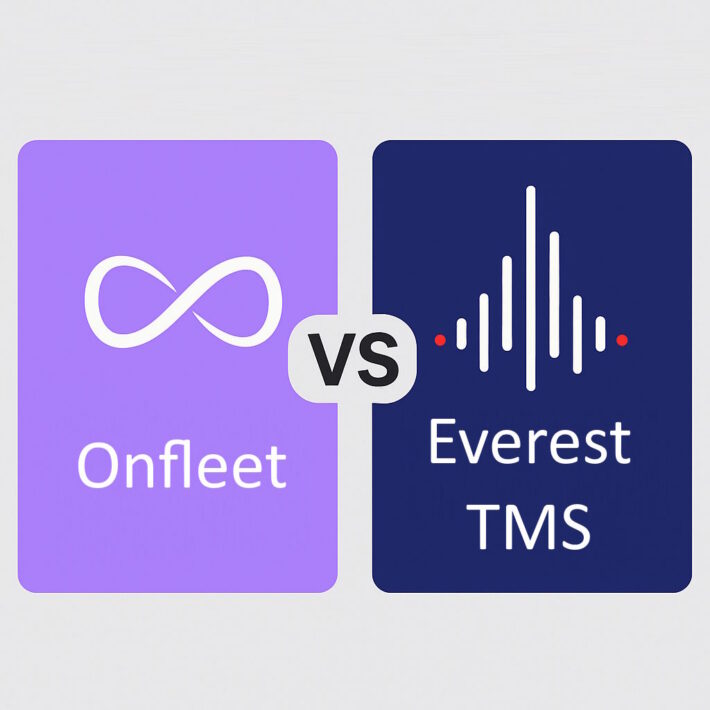TMS for small carriers: 7 tools to compete with large groups in 2025

In a sector where logistics giants have substantial resources, small carriers and cycle couriers must redouble their ingenuity to remain competitive. Good news: the digital revolution is leveling the playing field, offering smaller operations tools that were once reserved for large groups. Discover how adapted TMS solutions can transform your business and give you a decisive competitive advantage.
The challenge of small carriers facing delivery giants
Small transport companies and cycle couriers face unique challenges in a market dominated by players with considerable resources:
- Limited resources compared to competitors with deep pockets
- Reduced margins that complicate technological investments
- Lower visibility among potential customers
- Difficulties optimizing each route and each delivery
- Customer experience often less developed than that of large groups
However, small operations have considerable assets: agility, local knowledge, personalized customer relationships, and rapid adaptation capacity. The secret? Amplifying these strengths with the right digital tools.
1. Intelligent route optimization: the great equalizer
Route optimization is no longer the exclusive domain of large groups with dedicated operations research teams. Small carriers can now access sophisticated algorithms through accessible TMS solutions.
Concrete advantages for small carriers
- 15-25% reduction in traveled kilometers thanks to optimized routes
- Increased number of deliveries per route without additional resources
- Real-time adaptation to traffic conditions
- Consideration of specific constraints (low emission zones, delivery windows, etc.)
Small operations can thus compete with the logistical efficiency of large groups while preserving their flexibility. A TMS adapted for small carriers enables this optimization without requiring advanced technical skills.
2. Digitalized customer experience: your competitive advantage
Large groups have long dominated the customer experience with their sophisticated applications. Today, even the smallest operations can offer exceptional delivery tracking and communications.
Features accessible to small carriers
- Automated notifications via SMS and email at key delivery moments
- Real-time tracking with interactive maps for your customers
- White-label customer portal customized to your brand
- Proactive exception management with early alerts in case of potential delays
David Mercier, founder of CycloExpress in Lyon, testifies: “Our customers are often surprised that a small operation like ours offers tracking as sophisticated as the large groups. It has become our main loyalty argument.”
3. Dispatch automation: free up time for the essentials
Manual dispatch is time-consuming and a source of errors. Automating this critical function allows small carriers to focus on value-added activities and customer relationships.
How automation transforms small operations
- Creation of automatic assignment rules according to your criteria
- Reduction of 80% of the time spent on manual planning
- Significant decrease in attribution errors
- Ability to handle larger volumes without additional staff
Intelligent automation allows you to compete with large groups in terms of operational efficiency while maintaining the flexibility that is your strength.
4. Digitalized invoicing: accelerate your cash flow
Small carriers often suffer from extended payment terms that weaken their cash flow. Digitizing invoicing represents a major competitive advantage.
Immediate benefits for your cash flow
- Automatic generation of invoices as soon as delivery is completed
- 75% reduction in administrative processing time
- 9-day decrease in average payment times
- Direct integration with your accounting solution
An optimized billing cycle allows small operations to improve their cash flow, an essential condition for investing and developing in the face of large groups.
5. Data analysis: make informed decisions
Decisions based on accurate data are no longer reserved for large companies with teams of analysts. Small carriers can now harness the power of data-driven management.
Key indicators accessible to small carriers
- Actual cost per delivery according to zones and customer types
- Courier performance with identification of best practices
- Customer satisfaction rate and areas for improvement
- Profitability by customer and sector to guide your business development
This data allows you to precisely identify your competitive advantages and focus your limited resources on the most profitable activities.
6. Accessible decarbonization: a differentiating commercial argument
Reducing carbon footprint has become a major selection criterion for many clients. Small carriers can transform this constraint into an opportunity.
Digital levers for greener logistics
- Precise measurement of the carbon footprint of each delivery
- Route optimization to reduce emissions
- Automated environmental reporting for your clients
- Highlighting your ecological efforts as a commercial argument
Sophie Martin, logistics manager at GreenBike Delivery, confirms: “Thanks to our TMS, we can precisely quantify our environmental impact and communicate it to our customers. It has become a decisive argument for winning contracts against larger players.”
7. API integrations: join the logistics ecosystem
Interconnection with your customers’ and partners’ systems is essential for integration into the modern logistics chain. APIs are no longer reserved for large groups.
Opportunities offered by API integrations
- Direct connection with e-commerce platforms
- Seamless integration with your clients’ WMS
- Automated exchange of information with your partners
- Reduction of multiple entries and associated errors
Even with limited technical resources, small carriers can now benefit from turnkey integrations that open up new business opportunities.
ROI: concrete results for small carriers
Investing in an adapted TMS represents a significant commitment for a small operation. What concrete results can be expected?
- 30% average productivity increase
- 15-20% reduction in operational costs
- 25% improvement in customer satisfaction
- Return on investment in 4-6 months for most small operations
These figures, observed among our carrier and cycle courier clients, demonstrate that investing in the right digital tools pays off quickly.
How to choose the right TMS adapted for small carriers?
Not all TMS solutions are created equal, and some are specifically designed to meet the needs of small operations. Here are the essential criteria to consider:
- Ease of use without requiring technical expertise
- Pricing adapted to the scale of your business
- Modular functionality to grow at your own pace
- Responsive and personalized customer support
- Short implementation time without disrupting your operations
Questions to ask before choosing
- Is the TMS specifically designed for small carriers?
- Does it offer progressive scaling of features?
- Is the interface accessible from all devices, including mobile?
- Does the provider offer personalized support?
- Do other small operations testify to concrete results?
Conclusion: technology, ally of small carriers
Far from being a threat, digitalization represents a unique opportunity for small carriers and cycle couriers to effectively compete with large groups. By choosing a TMS adapted to their size and needs, these operations can amplify their natural strengths – proximity, flexibility, local knowledge – while closing their technological gap.
The key to success lies in choosing tools specifically designed for small operations, offering advanced features without the complexity and costs associated with solutions intended for large groups.
Is your small transport or cycle courier business ready to make the digital leap to compete with industry giants? Contact our experts to discover how our Everest TMS solution can transform your business.
Want to evaluate how a TMS could transform your small transport business? Book a personalized demo with our experts.



